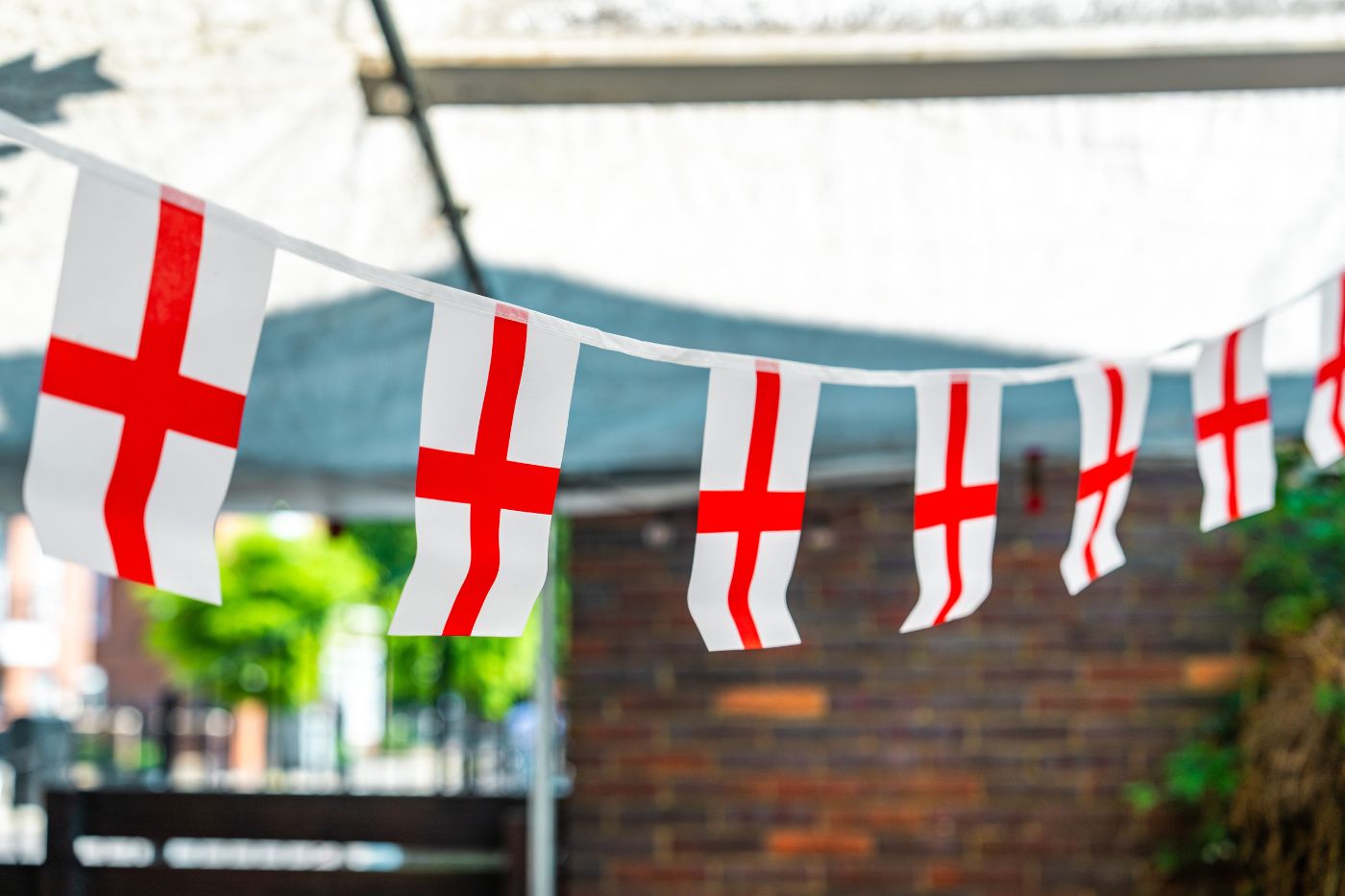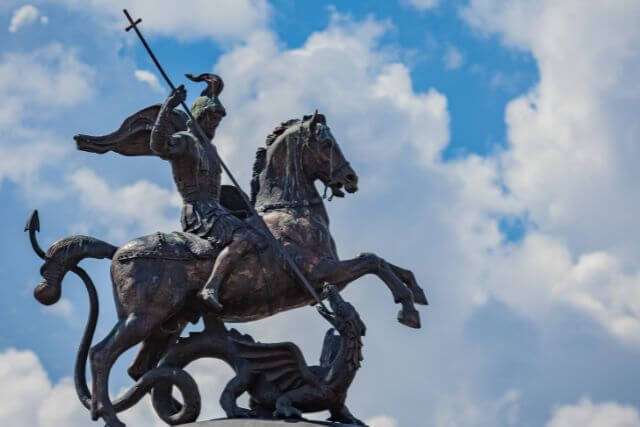The 20 Best UK Festivals for 2025
It’s that time of the year again! That’s right, festival season is back… and this year, many events are...

St. George is one of the most revered saints in history and is, of course, the patron saint of England. He has been celebrated for centuries after his legendary tale of courage, which saw him slay a fearsome dragon to save a town.
With St George’s Day around the corner, we thought we’d take you through the tale of St George and some fascinating facts that we bet you didn’t know!
Read on to find out some fascinating St George’s Day facts that are sure to impress..
St. George is most notably known for the tale in which he slays a dragon to save a town and a princess. St. George was a Roman soldier and Christian martyr, and this story made him a revered figure, particularly in England.
St George’s Day is celebrated in England on the 23rd of April, which is widely believed to be the date of the saint’s death.
Despite being the patron saint of England, St George was actually born in Cappadocia, which is now part of modern-day Turkey.

Little is known about England’s patron saint. According to legend, St George was born to a noble Christian family almost 2,000 years ago, between 275-281AD, in Cappadocia, which is now modern-day Turkey.
He served under Emperor Diocletian, and despite his military service, he refused to renounce his Christian faith and was then tortured and executed around AD 303, becoming a martyr.
St George is renowned for spreading the Christian religion around the Western civilisation. Following in his father’s footsteps, it is believed he joined the Roman army at the early age of 17, where he would become one of their finest soldiers.
Although we have seen George often depicted in popular culture as a knight covered in his beautiful shining armour, the truth I am afraid is less imaginative than that, it is more realistic to believe he was an officer in the Roman army.
Myth has it that St George slayed a dragon – by the way, this has nothing to do with the red dragon that appears on the Welsh flag.
The tale is that St George rode into Silene in what is modern-day Libya. The town had a small lake which had become home to a plague-bearing dragon who was poisoning the countryside. To satisfy the beast, the residents fed it two sheep a day. When the sheep ran out, it was decided the townsfolk would feed it their children, selected via a lottery draw.
One day, the king’s daughter was selected and despite his protest, she was sent to be sacrificed to the dragon. By complete coincidence, St George was riding past the town and came across the king’s daughter on her way to the dragon. The story goes that St George injured the beast with his lance and then controlled it by placing the princess’s girdle around the dragon’s neck.
St George killed the dragon only once the town agreed to convert to Christianity. However, this story postdates the real George for several centuries.
With images of George and the dragon surviving from the 9th century, which is around 500 years after his death. It is thought that these images may simply be a representation of the battle between good and evil.
In 303 AD, the Roman emperor Diocletian ordered a widespread persecution of Christians in the Roman Empire due to their growing support and influence. St George refused to renounce his Christian faith despite the emperor’s offers of wealth and land.
St George was executed by the orders of the Roman Emporer Diocletian in 303AD; he would have been in his late twenties. Historians commonly believe that over 3,000 Christians were executed by the orders of the emperor during this time.

Although St. George is the patron saint of England, he never stepped foot in the country. However, tales of George’s heroism reached England, and his fame grew after the Crusades when it was reported he appeared before Crusaders outside Jerusalem in 109AD.
He became much loved by European knights and often appeared on banners taken into battles. St George’s flag was adopted as England’s official flag in 1190.
King Edward III made George the patron saint of England in 1350, and his name would be further concreted in history by King Henry V. Shakespeare ensured nobody would forget St George by writing King Henry V’s famous battle cry, “Cry God for Harry, England and St George!”
St George is also the patron saint of Bulgaria, Palestine, Ethiopia, Greece, and Lithuania. Some of you may remember St George as the patron saint of the Scouts Club from your childhood.

The date of St George’s Day is believed to be the day he was executed in 303AD. In 1222, the Synod of Oxford declared St George’s Day a celebrated feast day in England, and ever since, it has featured on our calendars.
But why isn’t St George’s Day a bank holiday,, I hear you ask? Both Scotland and Ireland have bank holidays in celebration of their patron saints, St Andrew’s Day and St Patrick’s Day. The sad news is that St George’s Day used to be a public bank holiday, but it died out in the 18th century!
To this current day, St George’s cross still appears on the Garter badge for the Order of the Garter, which is the most senior order of the British knighthood honours system.
Head out on your own adventure today with holiday cottages in England! If you’re looking to learn more about the other patron saints of the UK, then you’re in luck, as we have plenty of St David’s Day facts and St Patrick’s Day facts for you to enjoy!
Are you on the phone to our call centre? Your Customer ID is:
Get involved in the Discussion